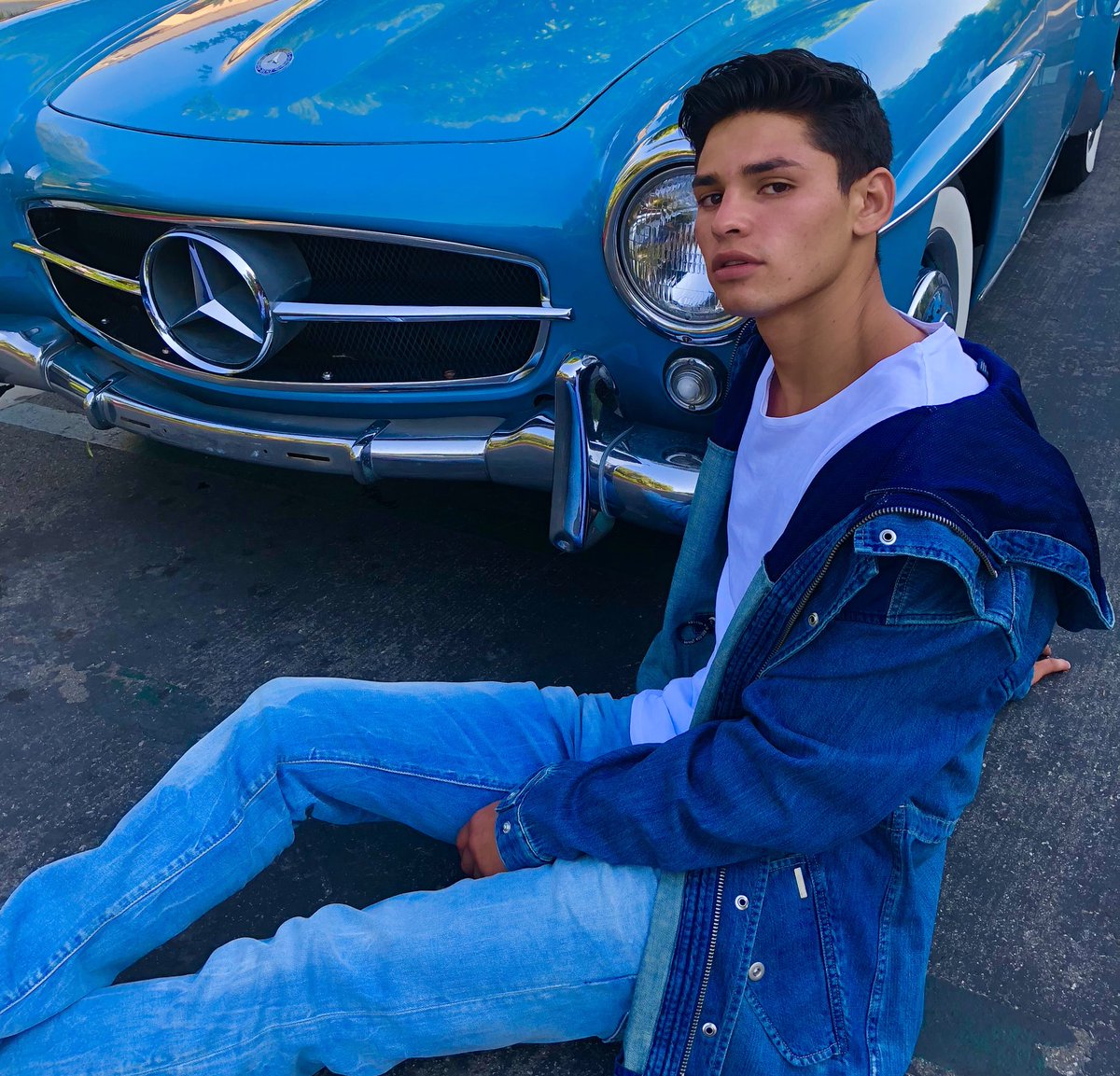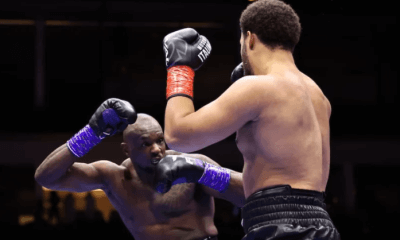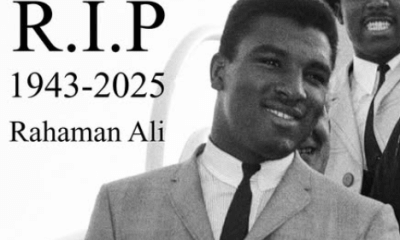Featured Articles
Is Ryan Garcia the Next Golden Boy 3.0?
Twenty years ago the wind was blowing fiercely when Oscar De La Hoya entered the Sun Bowl in El Paso to defend the welterweight world title

Twenty years ago the wind was blowing fiercely when Oscar De La Hoya entered the Sun Bowl in El Paso to defend the welterweight world title against France’s Patrick Charpentier.
An army of more than 30,000 mostly screaming women greeted the fighter from East L.A. to the surprise of the world watching on television that day on June 13, 1998.
De La Hoya defeated Charpentier easily that sunny day. That wasn’t the big story. The real story was watching thousands of young women trying to catch the Californian’s attention by throwing bras and panties in his direction. That female reaction was something never seen again. That is, until recently.
Meet Ryan “Flash” Garcia (15-0, 13 KOs) who is poised to meet Carlos “The Solution” Morales (17-2-3, 6 KOs) on Saturday Sept. 1, at Fantasy Springs Casino in Indio. The lightweight rumble will be streamed on Facebook Watch.
Garcia has that golden effect on young women and that concussion effect on opposing fighters. Those two traits are what remind many of De La Hoya’s march to Hall of Fame status in the boxing world. Women adore him and men fear him.
“It’s funny that you ask but it really does remind me of when I fought,” said De La Hoya about Garcia’s sudden fame. “I was thinking of that when he last fought at Fantasy Springs and I was watching all those little girls screaming for him and calling him out. It was funny because all those little girl’s moms were my fans.”
When Golden Boy Promotions signed Garcia they had no idea of what his appeal to women would be. But they did see a mercurial talent blast through opposition with speed and power seldom seen. Looks were an afterthought.
Garcia, who just turned 20 several weeks ago, reminds many of both Golden Boys. Yes, there were two Golden Boys.
Back in the late 1940s another Golden Boy from the Aliso Village area in Boyle Heights, a section of East L.A., first arrived on the boxing scene and his name was Art Aragon. Just like De La Hoya and Garcia, he was first recognized for his fighting prowess not his looks. But soon women took a look at him and began following.
Aragon was a star in the Los Angeles fight world and regularly sold out the Olympic Auditorium, Hollywood Legion Stadium and Wrigley Field in Los Angeles. He was the first to be called the “Golden Boy” until De La Hoya came along. The women loved him and men feared him. Any time Aragon fought you can believe the stands would fill up with fans that abhorred his fame and those women that wanted to see him with his shirt off. Lines would form around the block with fans wanting to buy tickets to see him fight.
Though Aragon never won a world title he was often seen with Hollywood actresses and models like Jayne Mansfield and Marilyn Monroe. His dalliances with celebrity females often led to front page news.
Today with the advent of social media a young fighter like Garcia can quickly attain a fandom and has done exactly that.
“He sold out Fantasy Springs, StubHub, he just sells,” noted De La Hoya via telephone. “Social media has a lot to do with it. I think it’s obvious he’s a good looking dude. He has charisma and obviously he can fight. Put that together and you have the perfect package and the fact he can outsell any fighter from California.”
The Flash vs. The Solution
Garcia has rampaged through 15 opponents both in Mexico and California as a teen. Now 20, the Victorville native will be facing an opponent in Morales who did not win a fight until his fifth pro bout. But after that, he did not lose another until last year losing a close bout in Puerto Rico.
Morales has that cagey boxing awareness you just can’t teach.
“I’m excited about fighting Ryan Garcia. He’s a very popular fighter,” said Morales. “He’s a good fighter like I said. But everyone is beatable.”
Morales, 28, has journeyed on the opposite road of Garcia, fighting on local cards against many boxers favored to beat him. His nickname the “Solution” was given to him because of his ability to figure out ways to defeat opponents.
“The (nickname) ‘Solution’ came from my trainer. I was always able to hold my own against good fighters,” said Morales.
Can he solve the speed and power assets that Garcia possesses?
“I’m more focused now than ever before,” said Garcia. “I’m going to show fans why we are the hottest thing in boxing.”
De La Hoya has seen this before and lived it.
“Now we’re reliving that with Ryan Garcia. The crazy part is he never had that Olympic stage and moment but you still have a young fighter that is captivating the youth,” said De La Hoya. “It shows you the star power of Ryan Garcia.”
Millions will be watching on Facebook throughout the world to see if Garcia can be the next version of the Golden Boy 3.0. It’s a lot to handle for anyone.
“If he can stay focused that’s my number one advice,” said De La Hoya. “And also stay humble. No matter how much you make stay humble.”
The journey has begun.
Check out more boxing news on video at The Boxing Channel
-

 Featured Articles4 weeks ago
Featured Articles4 weeks agoThe Hauser Report: Zayas-Garcia, Pacquiao, Usyk, and the NYSAC
-

 Featured Articles3 weeks ago
Featured Articles3 weeks agoOscar Duarte and Regis Prograis Prevail on an Action-Packed Fight Card in Chicago
-

 Featured Articles2 weeks ago
Featured Articles2 weeks agoThe Hauser Report: Cinematic and Literary Notes
-

 Book Review2 weeks ago
Book Review2 weeks agoMark Kriegel’s New Book About Mike Tyson is a Must-Read
-

 Featured Articles4 weeks ago
Featured Articles4 weeks agoRemembering Dwight Muhammad Qawi (1953-2025) and his Triumphant Return to Prison
-

 Featured Articles7 days ago
Featured Articles7 days agoMoses Itauma Continues his Rapid Rise; Steamrolls Dillian Whyte in Riyadh
-

 Featured Articles3 weeks ago
Featured Articles3 weeks agoRahaman Ali (1943-2025)
-

 Featured Articles3 weeks ago
Featured Articles3 weeks agoTop Rank Boxing is in Limbo, but that Hasn’t Benched Robert Garcia’s Up-and-Comers


















